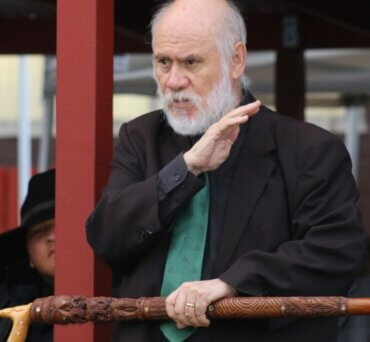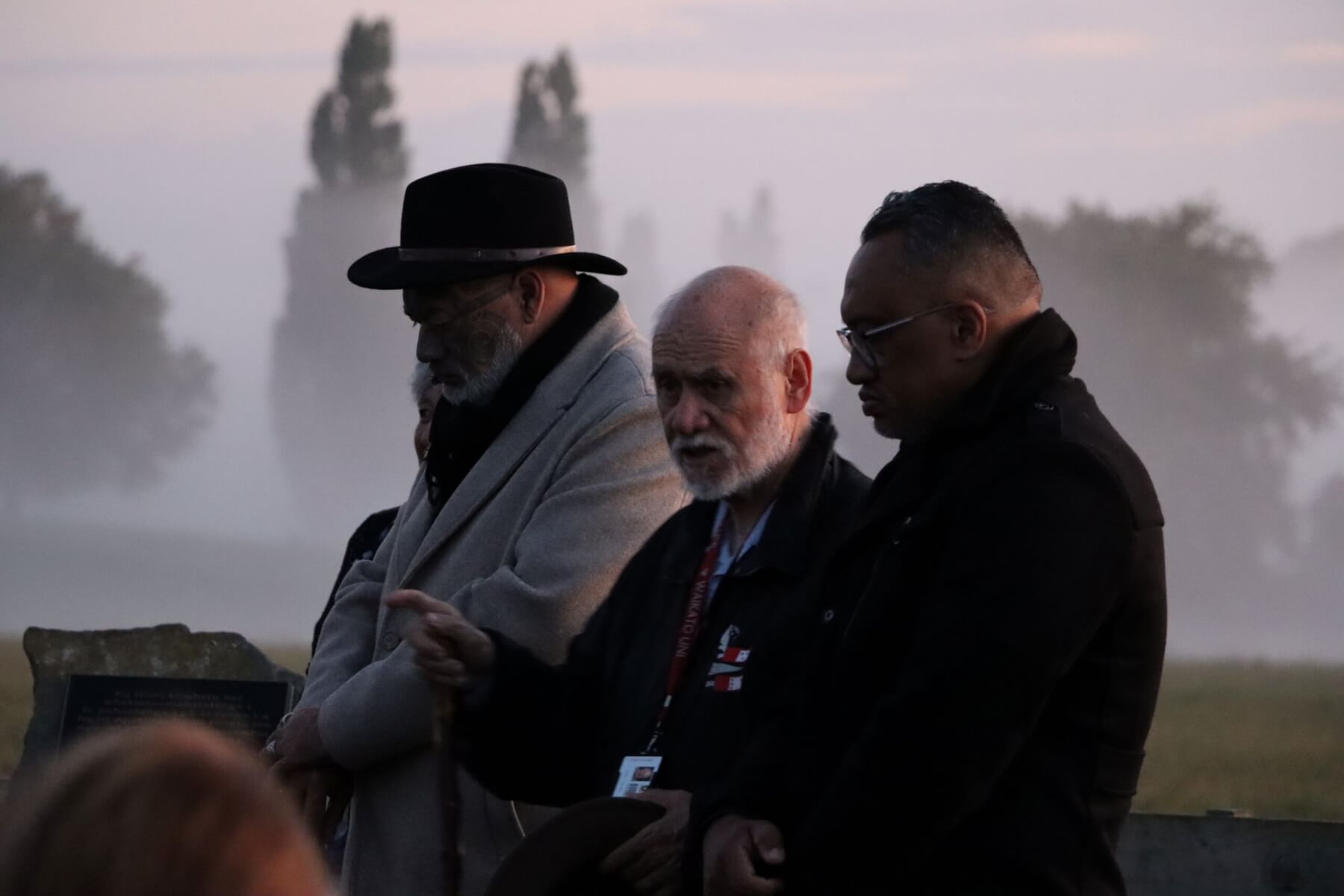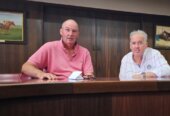
Tom Roa
There is an exhibition of photographs on display at the Gallagher Academy of Performing Arts at Waikato University which opened on June 30and will close November 7.

Professor Tom Roa, centre at Rangiaowhia. Photos: Regan Balzer.
Titled ‘Ki te kapu o taku ringa’ the exhibition by my colleague Dr. Rodrigo Hill and I merges mātauranga Māori and photography to reframe place representation. Through a kaupapa-driven lens, large-scale images and video works illuminate historical sites, honouring their place, mana and cultural significance.
The photographs explore place representation through a kaupapa Māori driven photographic approach. The project was centred on wānanga which we proposed are essential places for discussion, knowledge sharing, and cultural reflection led by mana whenua, local people.
The wānanga and subsequent images were guided by the Maioha mō Waikato, a song-poem composed by the second Māori King Tawhiao following his and his Waikato people’s expulsion from their Waikato homelands following the invasion of Crown forces in the 1860’s.

Professor Tom Roa and Dr Rodrigo Hill from Waikato university have launched a new photo exhibition and book at Ōtorohanga museum.
While living with their Maniapoto relations in the space later to be known as the King Country, Tāwhiao composed this song lamenting his, and his people’s, severance from the Waikato River valley and its (their) history and landmarks.
When someone takes a photo of something all rights to that image are legally the property of the photographer. Our assertion in this exhibition is that such a position ignores the ‘mana’ of the place that has been used to produce the image, and any rights the people of that space have with that image.
This is at the heart of the recent controversy in Hobson’s Pledge’s using an image with which legally they touched all the right bases and sought all the legal permissions. But their use of that image to promote something that the person portrayed in that image is against completely has left that person and their family very upset. The posters have since been taken down, but the hurt will linger as long as the issue of Māori wards remains at large.
The exhibition at the University challenges Eurocentric conventions, reframing landscape depictions in particular as visual thoughts rather than mere objective images. Through deep engagement with historical sites and mana whenua across Te Nehenehenui – the King Country – the project amplifies indigenous perspectives, expanding ways of seeing and understanding places, spaces, and the people who belong to them through a decolonised and indigenous informed lens.








